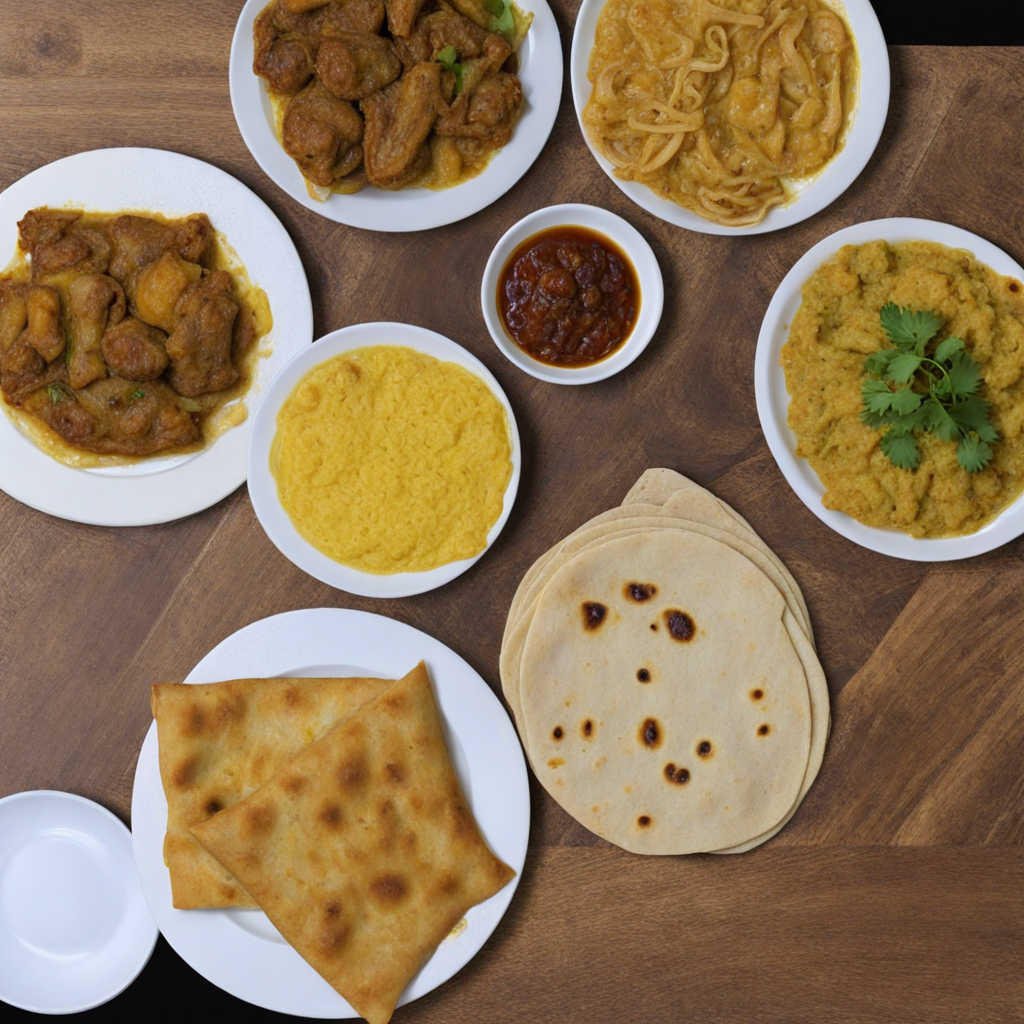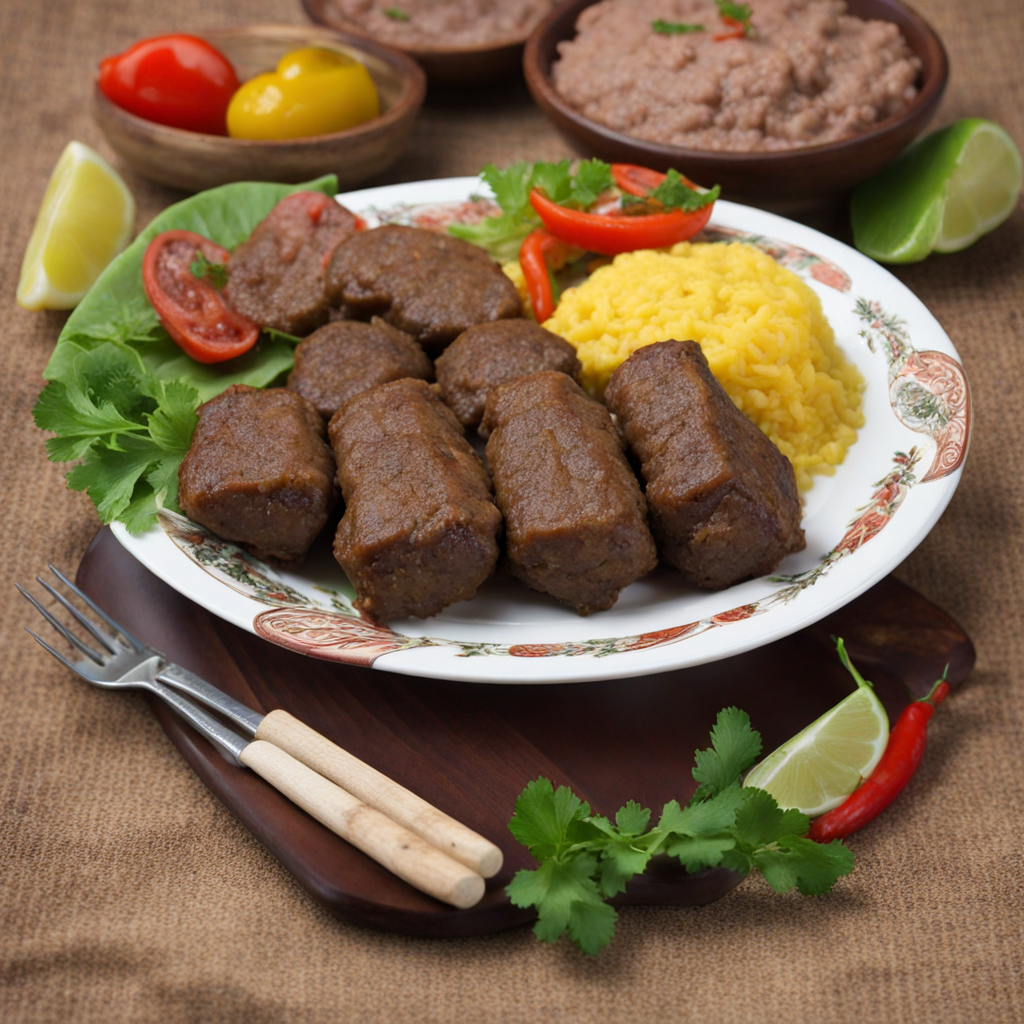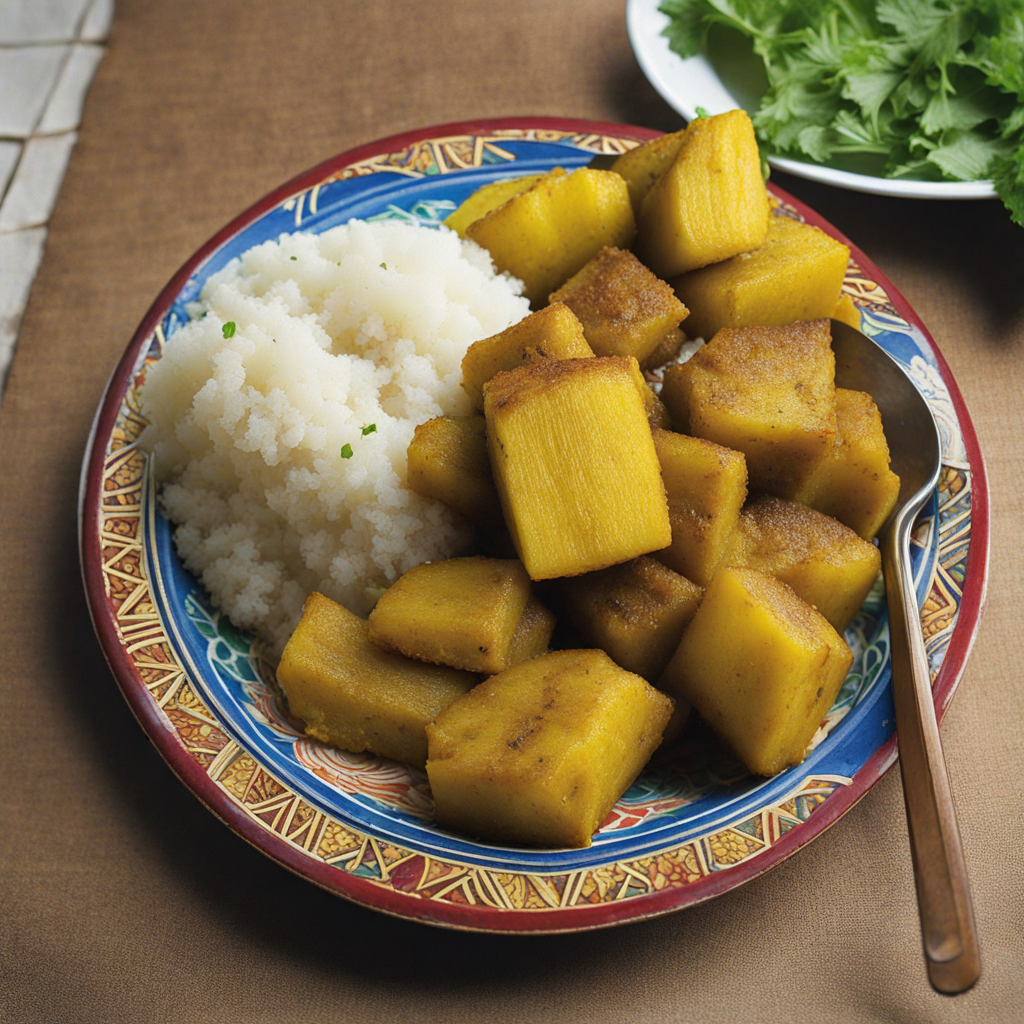Roti
Roti is a beloved dish in Suriname, deeply rooted in the country’s multicultural heritage, particularly influenced by Indian cuisine. This flatbread is made primarily from wheat flour, water, and a touch of oil, resulting in a soft, pliable texture that can be enjoyed warm or at room temperature. When cooked on a hot griddle, or 'tawa', Roti develops a slightly crispy exterior while remaining tender inside, making it the perfect accompaniment to a variety of dishes. The aroma that wafts from freshly cooked Roti is inviting, hinting at the warm spices that often accompany it. In Suriname, Roti is typically served with a range of flavorful sides, the most popular being curried meats and vegetables. Chicken, goat, or potato curry are common pairings, infused with a medley of spices such as turmeric, cumin, and coriander, which enhance the taste experience. The Roti acts as a vessel, allowing diners to scoop up the rich, aromatic curries, creating a harmonious blend of flavors and textures. This communal style of eating adds to the enjoyment, as sharing these dishes brings people together around the dining table. The versatility of Roti extends beyond just curries; it can also be enjoyed with a variety of dips and sauces, or even as a wrap for grilled meats and fresh vegetables. In Suriname, it's not uncommon to find Roti served during festive occasions or family gatherings, showcasing its significance in the local cuisine. This delightful flatbread embodies the essence of Surinamese dining, offering a unique taste experience that invites exploration of the country’s rich culinary landscape.
How It Became This Dish
Roti in Suriname: A Culinary Journey Through Time Origins of Roti Roti, a flatbread with roots in South Asian cuisine, has found a unique identity in Suriname, a small nation on the northeastern coast of South America. The word "roti" itself is derived from the Sanskrit term "roṭika," which means "bread." Traditionally, it was made from whole wheat flour and cooked on a hot surface known as a tawa. The introduction of roti to Suriname can be traced back to the late 19th and early 20th centuries when indentured laborers from India arrived in the region after the abolition of slavery. These laborers were brought in to work on sugar plantations, and they brought with them their culinary traditions, including the beloved flatbread. Cultural Significance In Suriname, roti transcends mere sustenance; it embodies a rich tapestry of cultural identity and social connection. The Indian diaspora, particularly the Indo-Surinamese community, has integrated roti into the broader culinary landscape of Suriname, making it a staple food. The flatbread is not just a food item; it is a symbol of heritage for many Indo-Surinamese families. It connects generations, often being prepared and enjoyed in communal settings during family gatherings, celebrations, and religious festivals. Roti holds a special place in the Surinamese diet, often accompanying various dishes. It is typically served with flavorful curries—like chicken, goat, or vegetable curry—reflecting the Indian culinary influence. The act of breaking bread together fosters bonds among people, making roti an integral part of Surinamese hospitality. In many homes, the preparation of roti is a communal activity, where family members gather to roll out the dough, cook the bread, and share stories, thereby reinforcing family ties and cultural traditions. Development Over Time As Suriname's society evolved, so did the preparation and consumption of roti. Initially, it was primarily made by the Indo-Surinamese community, but over the years, its popularity spread to other ethnic groups in Suriname, reflecting the nation’s multicultural fabric. The integration of different culinary influences has led to the development of unique variations of roti that cater to local tastes. One significant evolution in the preparation of roti in Suriname is the introduction of the "roti shop," which became prominent in urban areas during the latter half of the 20th century. These shops specialize in serving freshly made roti alongside an array of curry dishes, making it a go-to option for busy city dwellers. The rise of roti shops not only made this dish more accessible but also transformed it into a popular street food, cherished by people from all walks of life. Another noteworthy adaptation is the Surinamese "roti with saoto," a soup originating from Indonesia that has been embraced in Surinamese cuisine. This dish pairs roti with a fragrant chicken broth filled with spices, vegetables, and hard-boiled eggs, showcasing the intermingle of culinary traditions in Suriname. The globalization of food culture has also impacted the way roti is perceived and consumed. With the advent of social media and food blogs, Surinamese roti has gained recognition beyond its borders. Culinary enthusiasts and chefs from other cultures have begun to explore and experiment with roti, leading to inventive fusion dishes that incorporate elements from various cuisines. Roti in Modern Day Suriname Today, roti is celebrated in Suriname not just as a traditional food but as a dynamic part of the nation’s identity. Various festivals and events highlight the importance of roti in Surinamese culture. For instance, the annual "Roti Festival" showcases the versatility of this flatbread through cooking competitions, tastings, and showcases of different regional variations. Such events emphasize the communal and celebratory aspect of food, bringing together people from different ethnic backgrounds to appreciate the rich culinary heritage of Suriname. Moreover, the resurgence of interest in traditional foods has prompted many young Indo-Surinamese to learn the art of making roti from their elders. This transmission of knowledge ensures that the cultural significance of roti is preserved for future generations. Many families are now documenting their recipes and stories surrounding roti, intertwining them with personal and cultural histories. Conclusion Roti in Suriname is more than just a flatbread; it is a vessel of history, culture, and connection. Its journey from the fields of India to the multicultural melting pot of Suriname illustrates the power of food to transcend geographical boundaries and unite diverse communities. As roti continues to evolve, adapting to modern tastes while retaining its traditional roots, it remains a cherished staple in Surinamese households. The story of roti is a testament to the resilience of culinary traditions and the importance of food as a means of cultural expression and community bonding. Through each bite of roti, one can taste the history and heart of Suriname, a nation that thrives on its diversity and rich cultural tapestry.
You may like
Discover local flavors from Suriname







